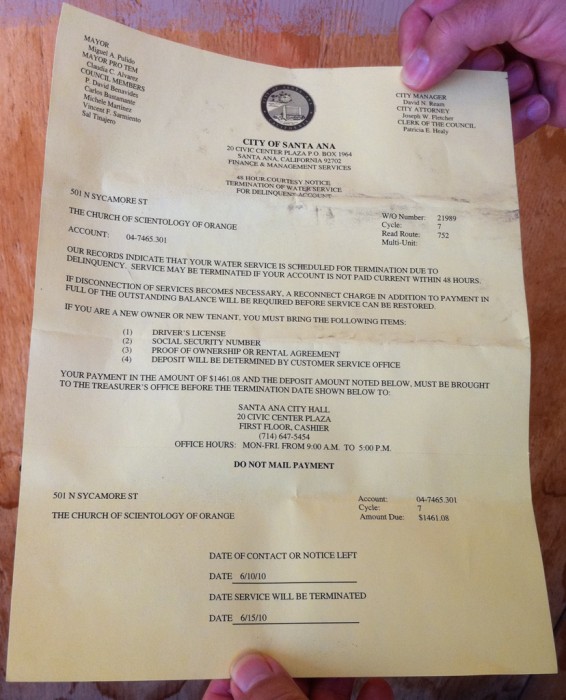Ellora's Cave: Tina Engler Compares EC to Rape Victims
07 April 2015
First, I’ll quote the long email that Tina Engler sent to an Ellora’s Cave email list, then discuss various points afterward. At the end, there will be a wrap-up section about “loyalty.”
Sent: Tuesday, April 7, 2015 11:46 AM
Subject: [ec_biz] Rumor Mill 2 (Long)
1) Amazon pays its self-published authors every 60 days; they pay us every 90 days. You can decide on Amazon’s motivation for yourselves.
2) Re: the lawsuit – while we cannot comment on specifics we can tell you that we have not asked for any author names. We have asked for specific individuals by name to be identified in discovery, all of who fall into 1 of 2 groups of anonymous commenters: competitors and/or former EC employees let go with cause. While we are disappointed that some of our authors have partaken in online gossip, and equally disappointed that some of our other authors have stayed publicly quiet while privately continuing to play both sides of the fence, we still have not requested author names. I realize it makes for juicier gossip if we were seeking that info, but such is not the case.
3) We did not “dox” anybody and that accusation is getting quite old. Fact: you cannot file a lawsuit against a person that doesn’t exist so of course the defendant’s real name was in the lawsuit. That said, it was the defendant who posted the lawsuit to her own blog, thereby “doxing” herself. We have never, at any point in time, posted the defendant’s real name and home address. I wish the defendant had granted me that same respect instead of posting my name and address on her blog back when my youngest daughter was 12 or 13 years old for anyone with an Internet connection to see.
4) Re: projection – No one should constantly have to defend themselves and their employees against accusations of wrongdoing that only the accusers have partaken in. It is time to make one thing crystal clear: we are not like the accusers. While hateful, gossipy people cannot wrap their heads around the fact that everyone else doesn’t think & behave like them, we trust that the majority of our authors can understand that.
5) Revisiting points 3 & 4: We are not pubnt. We are not STGRB. We did not and would not “dox” the defendant to her employers. It appears that she’s made quite a few enemies & frenemies over the years… A fact everyone recalls with ease when discussing their anger at her “revelation” but which is conveniently overlooked when it comes to us.
The bottom line: This situation is very old. Until we felt pushed into a corner & given no choice but to file a lawsuit just to clear our name I gave the defendant zero thought. Directly after filing the lawsuit, 95% of my thoughts were consumed with her & simply wondering WHY. Anonymous tipsters pretty much answered the question within a few days so within a week of filing she went down to about 50% of my thoughts. Within a month she was back to zero unless I had to think about her for purposes of the lawsuit.
This is a very long winded explanation as to why it induces major eye rolling in me every time I’m accused of being pubnt or an anonymous commenter or (insert ridiculous accusation.) I am happy to let the courts decide this case. I never wanted it tried on social media nor was I the one who took it there. But will I defend myself, my mother, my employees, & the many wonderful authors of EC who are being targeted on social media? Absolutely. I will never relent.
To the overwhelming majority of authors, especially those who have remained loyal to us: I am SO sorry you are being dragged through this. I am SO sorry you fear being publicly targeted if you say anything positive or even neutral about EC. What’s being done to us is being done to you & we get that. The only thing I can ask of you is to continue exercising patience while this plays itself out because dropping the lawsuit is not an option. I get that you just want this to go away, but asking us not to defend ourselves feels, to us, like asking a victim of rape not to testify against his or her rapist because of potential social backlash. Only a couple of you have come to us with this plea, but I felt it should be addressed to all of our authors in case others were thinking it. It’s vital to remember we didn’t start this, that we didn’t go online & trash talk anybody, but that we will use any legal remedy available to us to defend ourselves and end it.
I trust everyone had a wonderful holiday. As always, feel free to contact us with any questions.
Tina
Point the First: Amazon Payment Schedule
Amazon does not pay self-published authors every 60 days. Instead, they pay self-published authors every month, 2 months behind. So, sales in January get a royalty statement at the end of March, followed a few days later by the direct deposit/check. In my own case, I received my last statement on March 21 and the money was paid on March 29th for January sales. The previous month was February 20th and 28th, respectively, for December 2014 sales.
E-publishers, on the other hand, are paid quarterly. The fact that Tina doesn’t know the difference is consistent with Ellora’s Cave’s statements about quarterly payments being atypical and confusing.
Point the Second: Ellora’s Cave “Competitors”
We have asked for specific individuals by name to be identified in discovery, all of who fall into 1 of 2 groups of anonymous commenters: competitors and/or former EC employees let go with cause.
This is disingenuous. Why? Because competitors means the self-published, including previous Ellora’s Cave authors who are now self-publishing.
The purpose of the courts is not to go on information quests about your competitors.
Secondly, if your purpose was in fact to go after anonymous commenters who were former EC employees let go with cause, then the following is also true:
- Ellora’s Cave has had a relatively limited list of employees over the years. I suspect it knows all of them. (Including, for example, who commenter “Adam,” purportedly the spouse of a former EC emeployee, is.)
- If you wanted to go after them, then they could have been added as defendants in the suit. That is typical practice, but that didn’t happen.
- If part of the point of the lawsuit was to go after them, then why wasn’t it mentioned in the complaint? Sure, there was that one line about anonymous commenters in the wrong place (page 21 in the TRO memorandum of law), but there was no evidence attached in the complaint that there were any anonymous commenters.
So the actual documents submitted to the court disagrees with what Tina’s now saying.
There are those who believe that the comments as a whole were the reason that Dear Author and Jane Litte were sued.
Point the Third: “Doxxing”
Look, I’m one of those people who doesn’t much like the term doxxing, and who thinks it’s overused.
That said, a lawsuit really is the ultimate in doxxing, and not just in the revealing the legal name of a pseudonymous person. It doxxes that person to an entirely different community. Forever.
If I felt this were anything other than a SLAPP lawsuit, I might feel differently about it. So: I disagree with Tina on this point. I do believe that Ellora’s Cave doxxed Jane Litte unfairly.
It’s also incorrect that Jane posted it on Dear Author. It was hosted via an embedded iframe on The Passive Voice. I have also hosted all the lawsuit documents on Dropbox, but only because federal court documents can’t be obtained for free by most people.
Point the Fourth: “Projection”
No one should constantly have to defend themselves and their employees against accusations of wrongdoing that only the accusers have partaken in.
Oh. Please.
That’s such bullshit.
Point the Fifth: Disclaimers
We are not pubnt. We are not STGRB. We did not and would not “dox” the defendant to her employers.
- I still believe that Tina Engler is intimately involved with pubnt. I don’t believe pubnt is (or was) a sole voice, though. I have a shortlist.
- I’ve never claimed that Ellora’s Cave is STGRB (the ironically named Stop the Goodreads Bullies), but it is noteable that, in October, the first Ellora’s Cave tweet in over a month (which has since been deleted) supported STGRB.
- As for the harassing letters point, I do not believe Tina, but I am not going to say why I think so.
Point the Sixth: The Bottom Line
What Ellora’s Cave seems to fail to understand was that it was not Jane Litte’s article that turned us against Ellora’s Cave, it was the fact of Ellora’s Cave filing the lawsuit. In other words, Tina has causation exactly backwards.
The bottom line is that this lawsuit is very new. It will probably run 3-5 years, and it’s only been a hair over six months. Tina has previously said that she would like to make case law, and that would lengthen, not shorten, the case.
So it’s not very old, and Tina should be aware of that, having been in a three-year-plus lawsuit before in the Brashear case.
But will I defend myself, my mother, my employees, & the many wonderful authors of EC who are being targeted on social media?
Let’s get an example here so I can understand what you’re saying.
- Jenny Trout, writing as Abigail Barnette, is an Ellora’s Cave author.
- Jenny Trout has been targeted by STGRB and recently had a launch canceled as a result
So, you’ll be taking Jenny Trout’s side, then. Right?
No?
I thought not.
That’s what I call: a dishonest assertion on Tina’s part.
Point the Seventh: Rape Analogies. No. Just—No.
I get that you just want this to go away, but asking us not to defend ourselves feels, to us, like asking a victim of rape not to testify against his or her rapist because of potential social backlash.
Ellora’s Cave does not get to use the fact of my having been raped to justify their (my belief) SLAPP suit against a columnist.
No.
Hell no.
Fuck no.
You know what? Whatever sympathy/empathy I had for Ellora’s Cave just died in a fire.
Loyalty and Business Relationships
Ellora’s Cave isn’t a rape victim. It’s a brick. The brick does not love you.
I’d like to highlight some tweets from yesterday that I think are oh-so-apropos:
If there’s one word I’m getting sick of seeing, it’s “loyalty.” Between authors and publishers, but between readers and authors too. 1/n
— Olivia Waite (@O_Waite) April 7, 2015
Authors sign over publication rights, not speech rights. Point to the “loyalty” clause in any of my contracts, I dare you. 2/n
— Olivia Waite (@O_Waite) April 7, 2015
A publishing contract is a business relationship, creating mutual business interests. It doesn’t compel me to believe everything you say.
— Olivia Waite (@O_Waite) April 7, 2015
People switch publishers all the time, in this business. It’s not a betrayal: it’s a better match, a change in direction, etc.
— Olivia Waite (@O_Waite) April 7, 2015
And no, I haven’t been very vocal about this before now. I believed caution was warranted. I spoke up in authorized channels.
— Olivia Waite (@O_Waite) April 7, 2015
But now it seems that my (and others’) caution is being interpreted as hostility or two-facedness or, ugh, disloyalty.
— Olivia Waite (@O_Waite) April 7, 2015
You do not get to make broad public statements about enemies and haters while asking that we, your authors, remain silent.
— Olivia Waite (@O_Waite) April 7, 2015
You do not get to take legal action with wide free speech ramifications, and scold us when we express hesitance.
— Olivia Waite (@O_Waite) April 7, 2015
All of that, plus the following: the author’s responsibility is to their art and their bottom line. The publisher owner’s responsibility is to increase shareholder value. There are, at all times, various conflicts of interest between any author and any publisher.
End of story.
I don’t fault authors for looking out for their own perceived best interests (including, but not limited to: where they should publish next, and what they choose to share about their publication history and interactions with publishers), and neither should Ellora’s Cave.

















